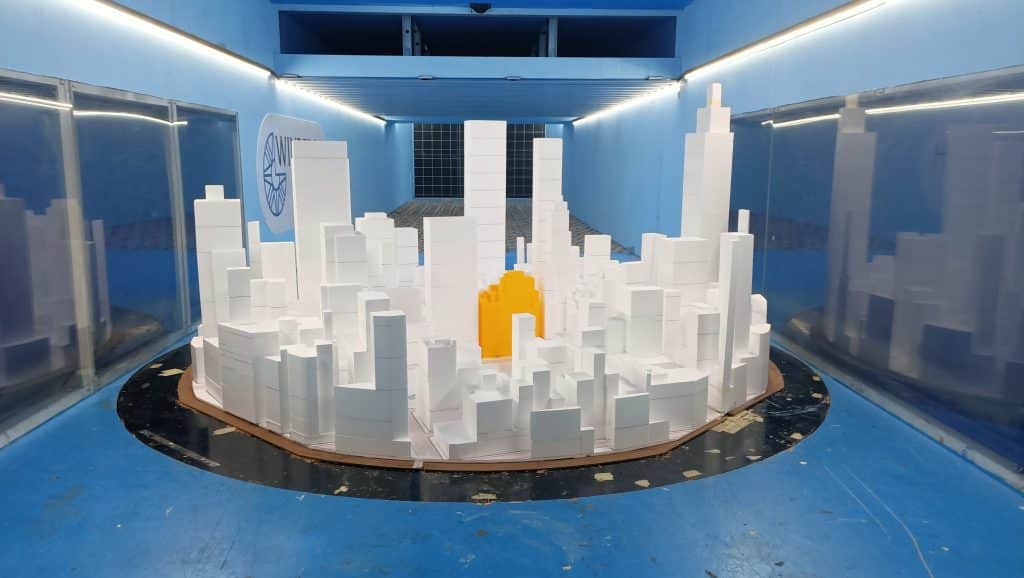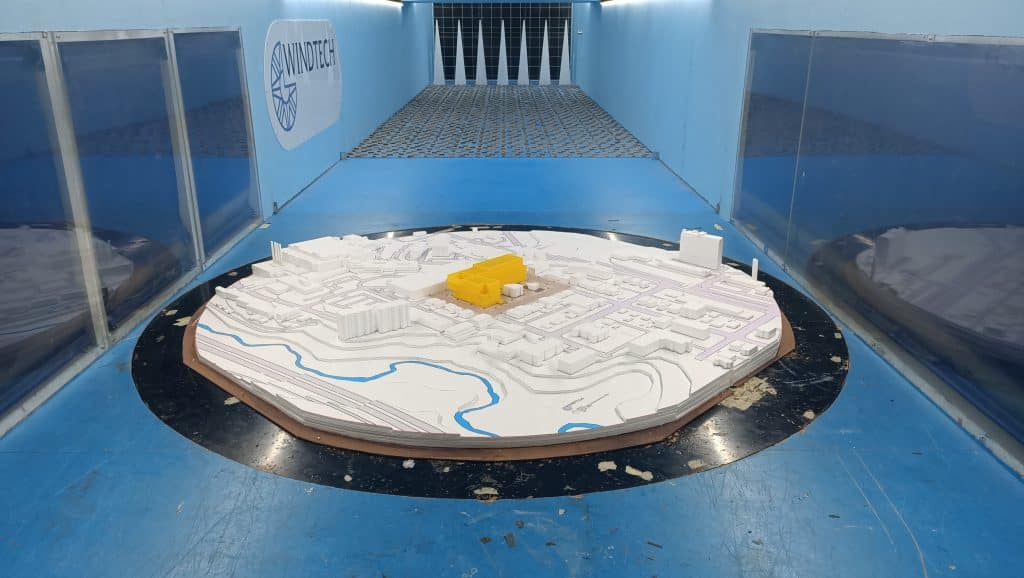Air Quality Studies for Performance Based Solutions
Posted on October 1, 2024
Air quality is often managed through prescriptive rules, generally in terms of minimum separation distances between the sources and accessible areas. There is generally no consideration in these rules for the potential effect of the pollutant being channelled by the wind for example in a gap between two podiums or entrapment of the discharge within a large catchment due to significant shielding of the source location from the prevailing winds.
Windtech offers performance-based solutions that are able to address not only the above shortcomings but allow for flexibility in the design given the many constraints faced by a designer when choosing to locate the discharge locations for a commercial kitchen, carpark exhaust or a standby power generator.
Windtech’s unique approach includes the provision of initial high-level input at the early design stages based on the local wind climate, the proposed building form and shielding by surrounding buildings and topography. Once the design has been sufficiently frozen, more detailed quantitative studies are undertaken against established exposure standards using only or more of the following methods:
- Wind tunnel flow visualisation to assess the general flow directions from the source location for different wind directions. This is more qualitative than quantitative but may suffice if the prescribed separation distances are satisfied and the purpose is to undertake due diligence. This type of wind tunnel study has specific scaling requirements (for gravitational effects) that are different to scaling requirements for other types of wind tunnel studies.
- Wind tunnel spectrometry is generally regarded as the most accurate method, where a tracer gas is emitted at the source location at the proposed speed and direction (louvre orientation). This also requires the same scaling technique as for the visualisation technique. This is normally undertaken in conjunction with the first method to enable the identification of any accessible areas that are likely to be impacted and to assist in determining the critical study locations. For each wind direction, the ratio of the tracer gas concentration at the various study locations is measured and determined as a ratio of the concentration at the source. These concentrations are assessed against the relevant exposure standards.
- Modelling using Computational Fluid Dynamics is another method and is undertaken using Windtech’s bespoke high resolution modelling techniques which have been calibrated against wind tunnel results. Windtech’s CFD methodology is regarded as one of the most rigorous processes in the world, presenting results that are within a 10% margin of measurements recorded inside a wind tunnel.
For any of the above techniques, Windtech is able to make recommendations for the improvement and management of exposure levels where required to meet specific regulations for the protection and comfort of the building’s inhabitants and the greater public. The test is repeated to confirm the effectiveness of the mitigation strategies.
Case Studies
An example of an air quality study undertaken using the wind tunnel flow visualization technique is the study of an industrial kitchen exhaust located below a communal terrace. The flow visualization indicates that the discharge tends to be carried up then shears down the façade onto the terrace. The solution involving a canopy over the terrace has been demonstrated to be effective (see the image below).

Figure 1: Testing of the canopy treatment as part of a 2011 flow visualisation study for the exhaust from an industrial kitchen in the Saigon Center, HCMC.
Examples of studies undertaken using the wind tunnel spectrometry technique are the SUNY Optometry Building and the Red Deer Regional Hospital. See images of the wind tunnel models below.

Figure 2: SUNY Optometry, New York, NY

Figure 3: Red Deer Regional Hospital (RDRH) Ambulatory Building, Alberta, Canada
Examples of studies undertaken using the computational fluid dynamics modelling method are the study of various discharges including a standby power generator from the Frankston Hospital in Melbourne, Disney HQ at 4 Hudson New York for the study of the rooftop boiler exhaust stream and the TRX Retail Plot 1, Kuala Lumpur for the study of odour dispersion (see Figures 4 to 6 below)

Figure 4: Frankston Hospital, Victoria, Australia – CFD Model Study for one of the sources

Figure 5: (Left) Disney HQ, New York, 4 Hudson Square, New York – Rooftop Boiler Exhaust Stream Simulation

Figure 6: TRX, Retail Plot 1, Kuala Lumpur – Odour Concentration Contours
Related Articles:
https://windtechconsult.com/john-hunter-health-and-innovation-precinct-jhhip-newcastle-nsw-helipads/
Return to Main News Page

